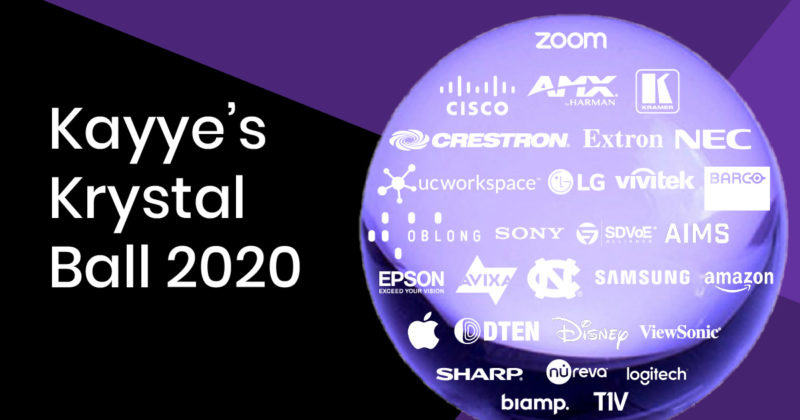When Size Matters: Projection Screens
 Larger flat panels, namely 70” and larger, are becoming more and more affordable, including a 90” model from Sharp coming in right around the $10k mark. We are talking sizes and prices that were, until now, reserved for projectors and projection screens. Many will agree that projectors still have their place and will continue to have it.
Larger flat panels, namely 70” and larger, are becoming more and more affordable, including a 90” model from Sharp coming in right around the $10k mark. We are talking sizes and prices that were, until now, reserved for projectors and projection screens. Many will agree that projectors still have their place and will continue to have it.
When thinking about commercial applications, high-end conference rooms and fancy sports bars may be the most impacted by this shift as the price of larger flat panels is now falling to the point where they would be comparable to a good mid-range projector and screen. There are still many applications where projectors will remain strong. K-12 is a good example of this, where often budgets are restricted and projectors can be had for less than $1,000. Additionally, many classrooms are now outfitted with interactive white boards which, by design, require a projector.
Further, there are still many venues where a very large screen is required, such as lecture halls, auditoriums, and large churches. With a 152” plasma display costing around $500k, the cost of a high end projector and screen is much easier to swallow at this point, and can still produce images significantly larger. On the flip side, there are projectors that are small enough to fit in your pocket that can project images as large at 70”, perfect for those on the go or for mobile presenters.
For the purpose of this discussion I am talking projectors, specifically projection screens, and determining the proper size screen for a particular space. According to InfoComm’s CTS Exam Guide, the maximum viewing distance is based on the amount of detail in the image. For the majority of the viewing public, the viewing distance should be no greater than 150 times the character height. For video, the closest viewer should be no closer than the width of the screen and the farthest viewer should be no farther than eight times the height of the screen. For computer data, the closest viewer should be no closer than the width of the screen and the farthest viewer should be no farther than six times the height of the screen.
Using the same math, you can determine an appropriate screen size based on viewer distance.
Examine the following formula:
S(H) = D / S(L)
S(H) = Screen Height, D = Distance of Farthest Viewer, S(L) = Screen Detail Factor (See Below)
4 – Engineering Drawings, Medical Images, Very Fine Detail
6 – Web Pages, Spreadsheets, Simple Presentations
8 – Motion Video
So if you are designing a conference room where the farthest viewer will be 24 feet from the screen, and content will be primarily general presentations such as PowerPoint or Web pages, you would calculate the screen height by dividing 24 by 6, which is 4 feet. Based on a 4-foot screen height, that gives you roughly an 84” diagonal if you are dealing with a 4:3 aspect ratio, or roughly a 94” diagonal screen in a 16:10 aspect ratio.
Now, you also have to take into account the ceiling height in the room. Generally, the bottom of the screen should be approximately 40” to 48” above the floor, so you will need clearance for the area underneath the screen, the height of the screen and housing, as well as the distance required for any projector lens offset. If you are working in a room with a low ceiling and you are not able to have clearance for all of these factors, then you will be limited as far as the size of screen that will physically fit in the space. In this case you would naturally try and find the largest possible screen for the area.
So in summary, the next time you are trying to determine an appropriate screen size, there are two main factors you need to consider. First are the dimensions of the audience area and second is the projection format or detail of content that will be displayed. The above formula will prove very useful once you have both pieces of information. Remember that in certain instances, you may be restricted by ceiling height, which in that case you will just want to find the largest screen height that will fit while considering the distance from the floor and projector offset.





